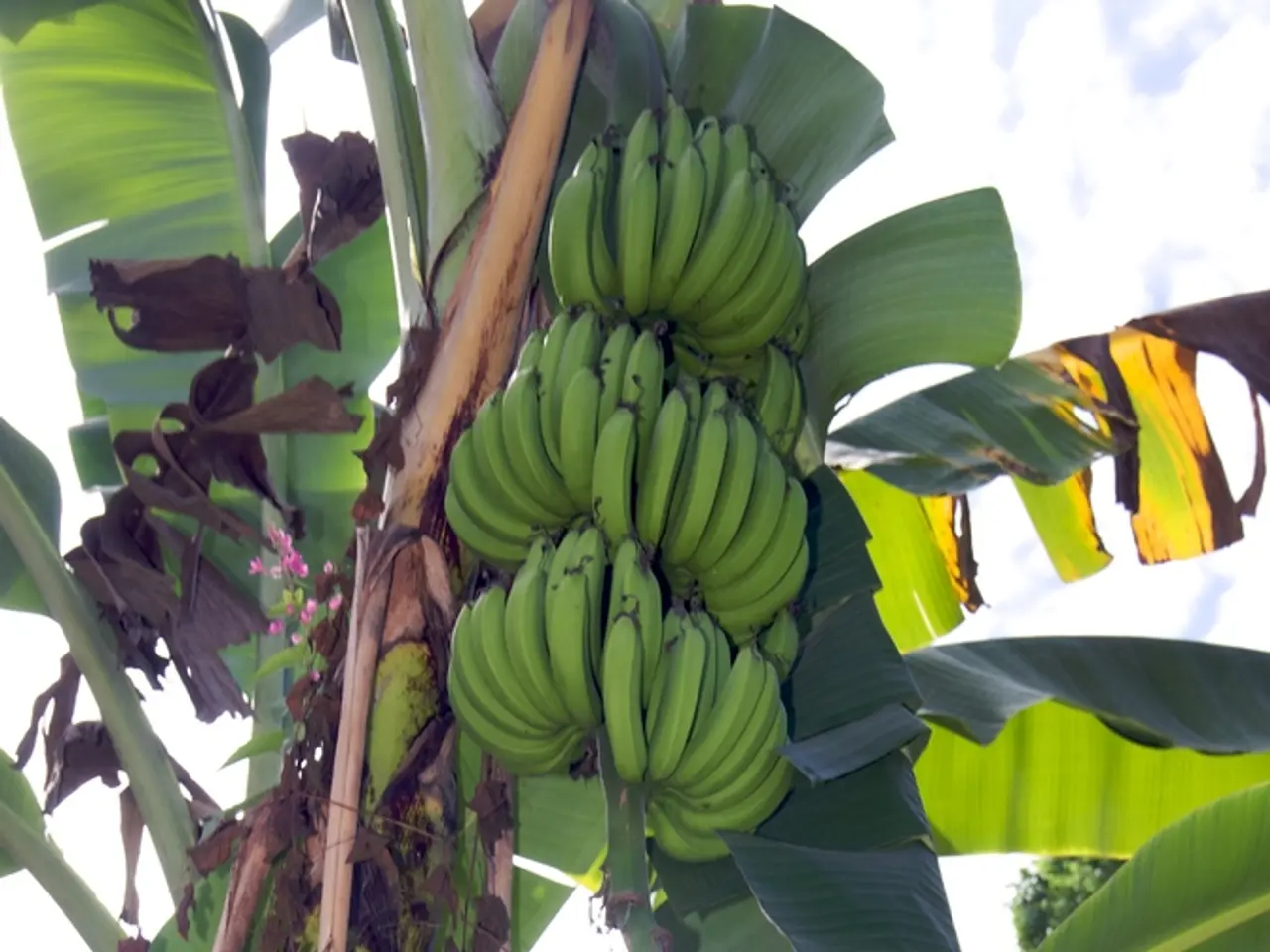Cultivating and Nurturing Banana Plants: A Guide
Banana plants, despite their towering, trunk-like stems, are herbaceous plants native to south-east Asia and now grown in over 150 countries. In the UK, these tropical delights are often found in gardens, with the most common varieties belonging to the Musa and Ensete genera, which typically do not produce edible fruits.
One of the hardiest cultivars for UK gardens is Musa x paradisiaca 'Rajapuri', which copes well with wind and may bear edible fruits under the right conditions. This banana variety can reach heights of 4m and spreads up to 2.5m. Another popular choice is Musa acuminata 'Zebrina', a medium-height cultivar with highly ornamental, red-striped leaves, ideal for containers, measuring 1.5m high and 1m wide.
New banana plants can be grown from small, suckering shoots (offsets) at the base of the parent plant. For those seeking a smaller variety, Musa acuminata 'Dwarf Cavendish' is a suitable option, reaching 2.5m high and 1.5m wide. The most popular variety grown for human consumption is the Cavendish banana (Musa cavendishii).
To cultivate banana plants in the UK, it's essential to provide optimal growing conditions and appropriate winter protection. Banana plants thrive in warm temperatures, ideally at least 15°C (59°F) indoors, and between 20–32°C (67–90°F) for growth outdoors. They prefer very bright light but not direct, scorching sunlight, and require consistently moist soil. High humidity is crucial, so regular misting is recommended.
During the active growing season (spring and summer), feed the plant regularly with an appropriate fertilizer every few weeks to support healthy growth. In winter, banana plants require protection, especially in areas with cold climates. This can be achieved by planting in a well-drained, sheltered spot, heavily mulching around the base, wrapping the trunk, and limiting protection to tough freezes.
Many gardeners grow banana plants indoors or in conservatories during winter to maintain the required warmth and humidity, moving them outside in late spring through summer. Cold, wet weather can cause rot in banana plants, which can be avoided by ensuring the soil drains freely and protecting from frost.
Some hardier varieties like Musa basjoo have a better chance of surviving winter in the UK. This Japanese banana is grown for its large leaves and may produce flowers and small, inedible fruits. The Chinese yellow banana (Musa lasiocarpa) is another interesting choice, with striking yellow flowers and a size of 1.5m high and 1m wide.
Banana plant care involves watering and feeding regularly, protecting from freezing temperatures in winter, and being careful not to over-water or allow the roots to go short of water. When grown in pots, use a pot no more than twice as large as its present pot size and a good quality, loam-based compost.
Outdoor banana plants can suffer from wind damage, and torn leaves can be removed if they become unsightly. However, prolonged periods of frost could still kill the banana plant, but new growth may come from the roots. Banana plants grown in a conservatory or greenhouse may suffer from pests like mealybug and red spider mite, controlled using a biological control.
By following these guidelines, banana plants will have their best chance of thriving in the UK climate, balancing their tropical needs with practical winter care.
Incorporating banana plants into a home-and-garden lifestyle, particularly within the UK, is becoming increasingly popular due to various hardy cultivars available, such as Musa x paradisiaca 'Rajapuri' and Musa acuminata 'Zebrina'. These varieties can add an exotic touch to any home-and-garden or garden setting, while also offering opportunities for plant care and gardening enthusiasts to cultivate their own banana plants.




